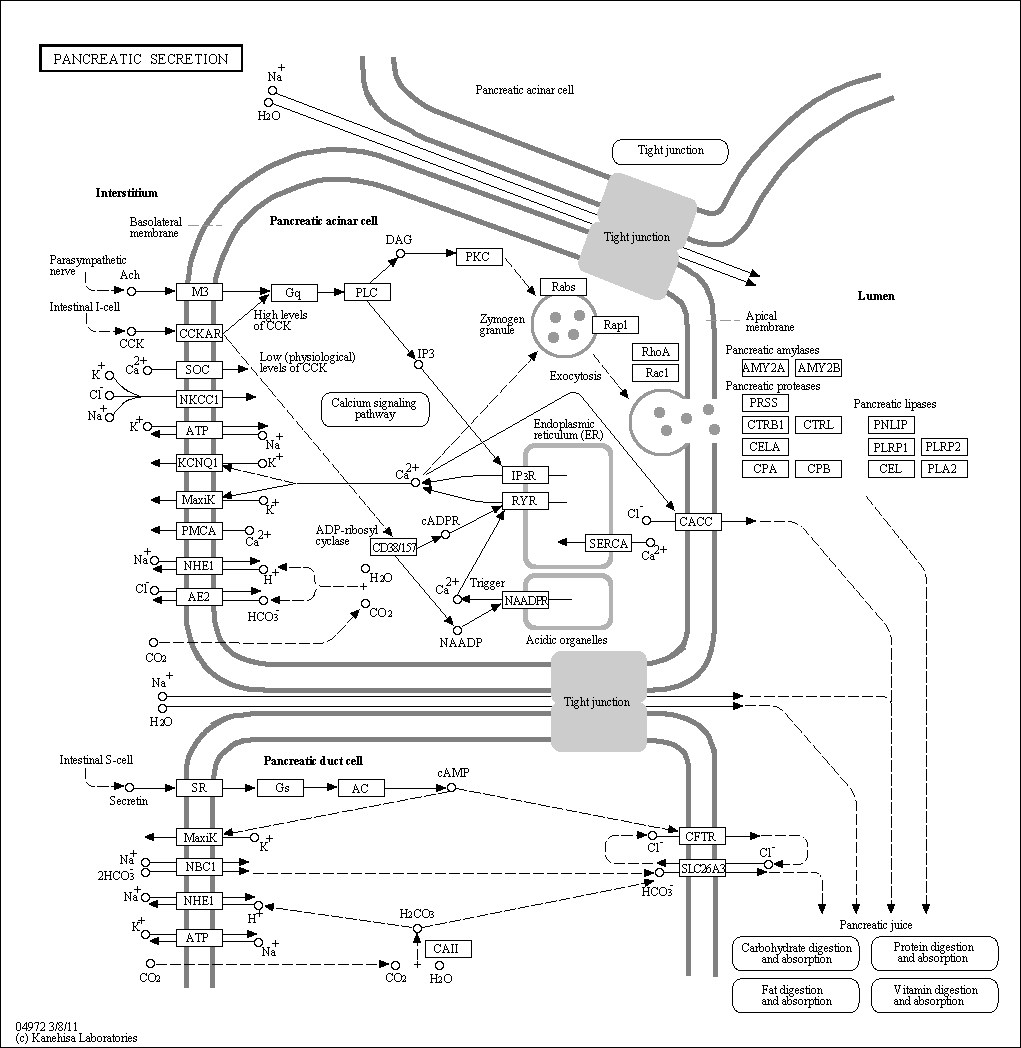Pancreatic Secretion
Description: The pancreas is a gland organ involved in both the endocrine system as well as digestive system. It is divided into two different types of tissues, the islets of Langerhans and the pancreatic acini. The two types have different yet equally important functions.
The islets of Langerhans exist as spherically shaped cell clusters and make up the endocrine portion of the pancreas. Within the islets, there are four main types of cells, each producing and secreting different hormones. These cells are difficult to distinguish physically and are therefore characterized by the hormone which they secrete: alpha-cells produce glucagon (increases the glucose concentration within the blood); beta-cells produce insulin (decreases the glucose concentration in the blood); delta-cells produce somatostatin (helps regulate alpha and beta-cells); and PP-cells produce pancreatic polypeptide (performs various regulatory functions within the pancreas). These cells are primarily controlled by a paracrine and autocrine feedback system. The hormones produced are released through exocytosis and enter directly into the blood stream.
The pancreatic acini control the exocrine functions of the pancreas. There are two main classes of secretion, bicarbonate ions and digestive enzymes. The primary function of the bicarbonate ions is to neutralize acids within the stomach. The digestive enzymes are mainly in charge of breaking down lipids and proteins. The pancreas also produces several proteases such as trypsinogen and chymotrypsinogen as well as pancreatic lipase and pancreatic amylase. These exocrine secretions are regulated by hormones released from both the stomach and neighboring duodenum.

Related BMRB Molecules
For complete information about pathway, see KEGG [map04972]
